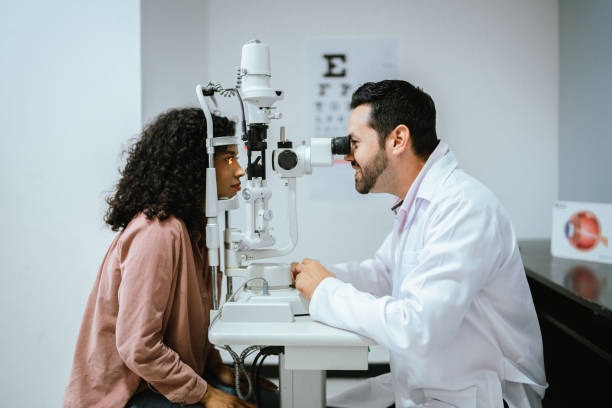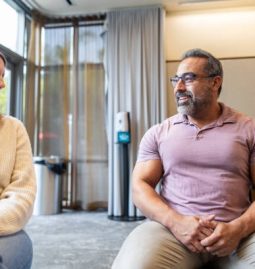Vision is one of our most precious senses. It allows us to connect with the world, enjoy life’s beauty, and handle daily tasks safely and efficiently. But nearly everyone experiences some vision problem at some point, whether it’s a minor annoyance or something that seriously affects their quality of life. Let’s look into some of the most typical vision problems people face, how you can recognize them, and—most importantly—how an optometrist can help keep your sight clear and healthy.
What Are the Most Common Vision Issues?
Our eyes are complex organs, which means there are plenty of opportunities for problems to crop up. Luckily, most are common and treatable. Here’s a look at the top culprits:
-
Refractive errors: These include nearsightedness, farsightedness, astigmatism, and presbyopia.
-
Eye strain and fatigue: In today’s digital world, screen time is a key cause.
-
Dry eye syndrome: Often linked to climate, age, or excessive digital device usage.
-
Cataracts: Usually age-related, causing cloudiness in the lens of the eye.
-
Glaucoma: A group of eye conditions that can damage the optic nerve, often with no warning signs.
-
Macular degeneration: It mostly affects people over 60 and impairs central vision.
How Do You Know Something’s Wrong?
Most vision problems don’t start with a bang. Symptoms often creep up subtly. Here are some hints that it’s time to get your eyes checked:
-
Blurry or double vision
-
Difficulty reading or focusing on objects
-
Frequent headaches or eye pain
-
Light sensitivity or seeing halos around lights
-
Squinting or needing to sit close to screens
-
Excessive tearing or dry, scratchy eyes
Breaking Down the Most Frequent Eye Problems
1. Refractive Errors
If you need glasses or contacts, you probably have a refractive error. But what does that mean? In simple terms, refractive errors happen when the shape of your eye prevents light from focusing correctly on your retina.
-
Nearsightedness (Myopia): You can see things up close but struggle with distant objects.
-
Farsightedness (Hyperopia): Distant objects are clearer than nearby ones.
-
Astigmatism: Vision is blurry at all distances, caused by a misshapen cornea or lens.
-
Presbyopia: Age-related loss of close-up focusing ability; most people notice it in their 40s or 50s.
2. Eye Strain
Digital screens are part of life now—for work, entertainment, shopping, and even socializing. All this screen time can often cause what’s called digital eye strain or computer vision syndrome. Symptoms include tired, achy eyes, headaches, blurred vision, and sometimes even neck and shoulder pain.
Easy ways to counter eye strain:
-
Follow the 20-20-20 rule: Every 20 minutes, look at something 20 feet away for 20 seconds.
-
Reduce glare on your screens.
-
Set up your workstation with your monitor about an arm’s length away.
-
Consider blue light-filtering lenses.
3. Dry Eye Syndrome
If your eyes feel gritty, burn, or water excessively, you might be dealing with dry eye syndrome. This condition happens when you don’t produce enough tears, or your tears evaporate too quickly. It’s surprisingly common, especially as you age, take certain medications, or live in dry climates.
4. Cataracts
Cataracts are basically the result of your eye’s natural lens becoming cloudy, making everything look hazy, dim, or even yellowish. Most cataracts form over time, but they can occasionally develop faster due to genetics, injury, or medical conditions like diabetes. The good news? Cataracts are extremely treatable with surgery, which restores vision for millions every year.
5. Glaucoma and Macular Degeneration
Unlike conditions that make your eyes feel dry or sore, glaucoma and macular degeneration can sneak up with no or minimal symptoms until the damage is advanced. Glaucoma usually results from increased pressure in the eye, which can damage the optic nerve, while macular degeneration destroys the central part of the retina responsible for sharp vision.
Regular eye exams—especially as one ages—are essential for catching these problems early before permanent damage occurs.
How an Optometrist Can Help
You might be wondering, “When do I need to see an eye specialist?” The answer: Sooner than you think! Optometrists don’t just prescribe glasses—they check overall eye health, detect early signs of disease, and offer advice that might prevent or slow down vision loss.
1. Comprehensive Eye Exams
Seeing an optometrist is the first step toward understanding your eye health. During a typical eye exam, your optometrist will:
-
Ask about your medical and family history
-
Check for common vision issues and test your visual acuity
-
Examine the health of your retina, lens, and optic nerve
-
Assess for conditions like glaucoma, cataracts, macular degeneration, and more
-
Recommend a personalized treatment plan if needed
2. Corrective Lenses and Other Solutions
For most people, glasses or contact lenses can make a world of difference. Your optometrist can fit you for the right prescription and help you choose lens options that best match your lifestyle. For those seeking alternatives, they can also advise you about procedures like orthokeratology, which reshapes your cornea overnight using special contact lenses.
If you live in hotter, drier areas or have noticed extra discomfort with your eyelids, you might be curious about contemporary procedures such as laser eyelid surgery in Phoenix. This minimally invasive solution is often discussed during consultations for patients who want a more permanent approach to rejuvenating eye comfort and function.
3. Managing Dry Eye and Eye Strain
An optometrist can diagnose the root causes of dry eye and recommend effective treatments. Solutions may include:
-
Prescription or over-the-counter artificial tears
-
Eyelid hygiene routines
-
Specialty contact lenses
-
Lifestyle adjustments, such as screen breaks
For those struggling with digital eye strain, your optometrist can suggest specific screen habits and lens filters that really help.
4. Monitoring and Treating Eye Diseases
Early detection is the key to treating serious eye conditions like glaucoma and macular degeneration. Your optometrist will use tools like retinal imaging and pressure tests to catch signs of trouble before your vision is affected. If diagnosed in time, many eye diseases can be slowed with medication, supplements, or surgery.
Suppose you’re looking for practical advice or second opinions from a professional. In that case, an eye doctor in Phoenix has the training and technology to personalize your care, no matter your age or eye health history.
Why Regular Eye Checkups Are Essential
Just like dental checkups or visits to your primary care provider, seeing your optometrist regularly can save you a lot of trouble in the long run. Many eye problems develop slowly and are much easier to manage if caught early.
-
Children: Early exams can detect issues that might affect learning and development.
-
Adults: Routine checkups can catch and correct refractive errors and help protect against conditions like glaucoma.
-
Seniors: Increased risk for cataracts, macular degeneration, and other sight-threatening diseases makes regular exams crucial.
How Often Should You Get Your Eyes Checked?
The answer depends on your age, health history, and risk factors. As a general rule:
-
Children: First eye exam at 6-12 months, then at least once every two years after age 6.
-
Healthy adults: Every two years if you have no symptoms or existing conditions.
-
Adults 60 and older: Annually, or as recommended by your optometrist.
What to Expect During an Eye Exam
Are you worried about what will happen at your appointment? Eye exams are generally quick, painless, and non-invasive. Here’s a quick walkthrough of what’s likely to happen:
-
You’ll discuss your vision, symptoms, and health history.
-
Visual acuity will be checked using an eye chart.
-
Your optometrist will shine a light into your eyes to check the health of your retina and lens.
-
Eye pressure measurements help check for glaucoma.
-
You should get your pupils dilated for a closer look at the back of your eye.
-
A prescription for glasses or contacts may be given if necessary.
Special Cases: When to See an Optometrist Immediately
Some vision symptoms should never be ignored. Contact your optometrist right away if you experience:
-
Sudden vision loss or double vision
-
Pain or redness in your eyes
-
Flashes of light, floaters, or a shadow/curtain over your field of view
-
Eye injury or exposure to chemicals
How to Find the Right Eye Professional
Not all eye care providers offer the same services. Optometrists are your go-to specialists for exams, prescriptions, disease screening, and most non-surgical treatments. If your vision requires further attention, such as surgery, your optometrist can refer you to an ophthalmologist for more advanced care.
If you are based in the area and want a professional familiar with your local community, an experienced optometrist in Sun City will understand the specific vision needs that come with Arizona’s brightness and dry conditions.
Final Thoughts
Vision problems are incredibly common, but with regular eye exams and everyday care, most issues can be managed effectively. Optometrists are the key partners in your lifelong eye health journey. Whether you’re hoping to update your prescription, solve a dry eye mystery, or catch a sneaky disease before it harms you, don’t wait for symptoms to worsen—make an appointment soon and see the world clearly for years to come.








